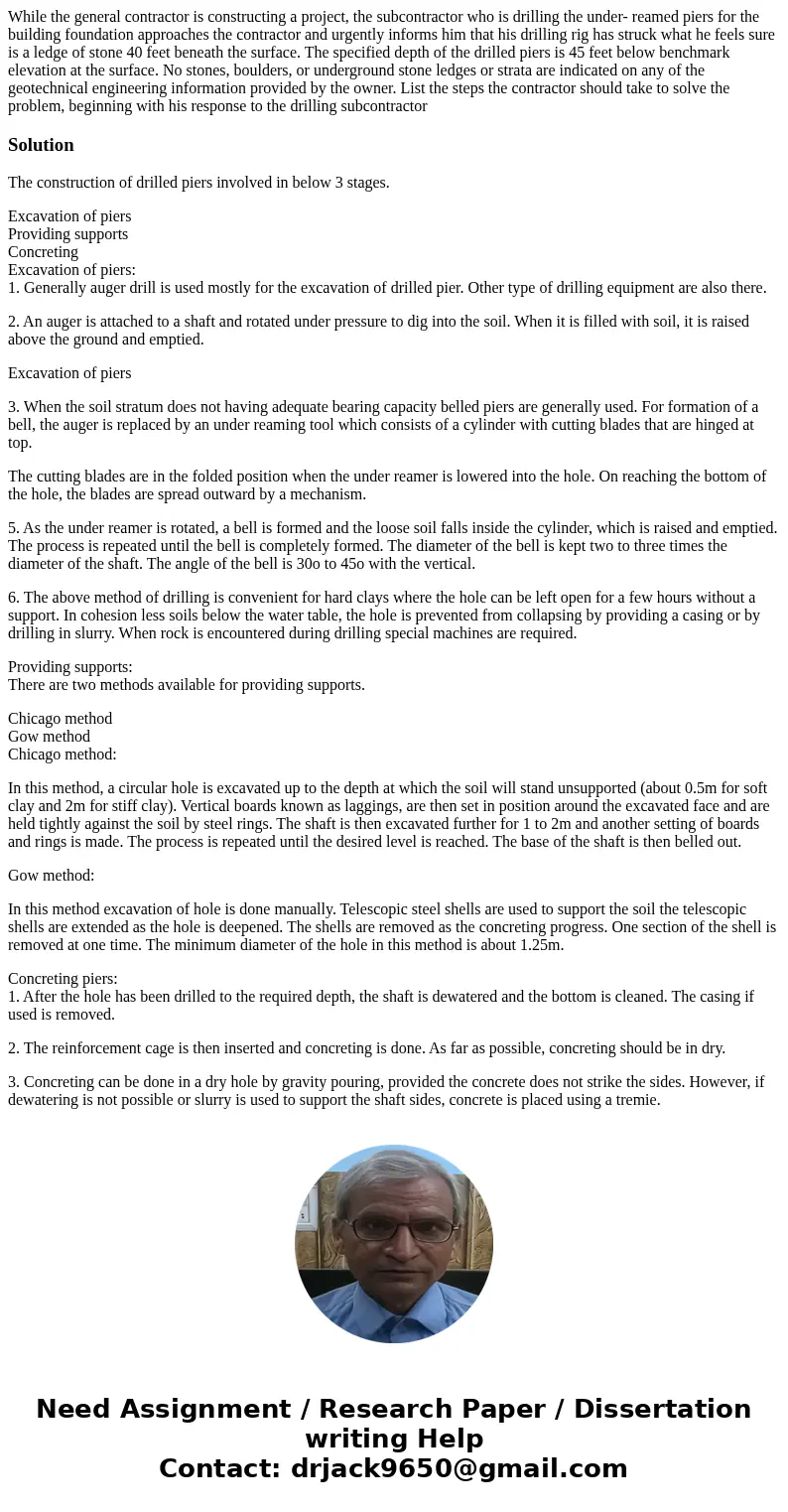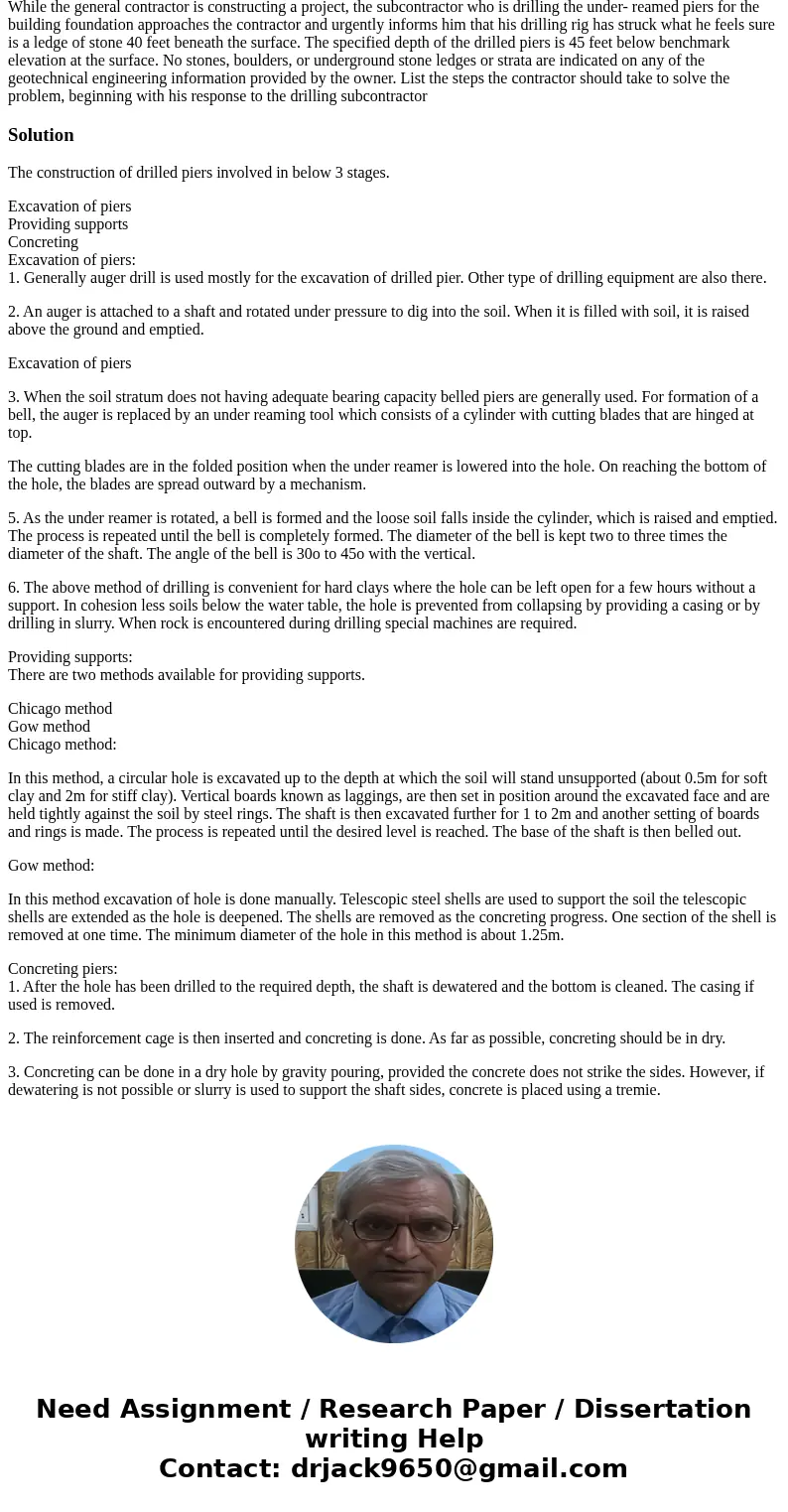While the general contractor is constructing a project the s
While the general contractor is constructing a project, the subcontractor who is drilling the under- reamed piers for the building foundation approaches the contractor and urgently informs him that his drilling rig has struck what he feels sure is a ledge of stone 40 feet beneath the surface. The specified depth of the drilled piers is 45 feet below benchmark elevation at the surface. No stones, boulders, or underground stone ledges or strata are indicated on any of the geotechnical engineering information provided by the owner. List the steps the contractor should take to solve the problem, beginning with his response to the drilling subcontractor
Solution
The construction of drilled piers involved in below 3 stages.
Excavation of piers
Providing supports
Concreting
Excavation of piers:
1. Generally auger drill is used mostly for the excavation of drilled pier. Other type of drilling equipment are also there.
2. An auger is attached to a shaft and rotated under pressure to dig into the soil. When it is filled with soil, it is raised above the ground and emptied.
Excavation of piers
3. When the soil stratum does not having adequate bearing capacity belled piers are generally used. For formation of a bell, the auger is replaced by an under reaming tool which consists of a cylinder with cutting blades that are hinged at top.
The cutting blades are in the folded position when the under reamer is lowered into the hole. On reaching the bottom of the hole, the blades are spread outward by a mechanism.
5. As the under reamer is rotated, a bell is formed and the loose soil falls inside the cylinder, which is raised and emptied. The process is repeated until the bell is completely formed. The diameter of the bell is kept two to three times the diameter of the shaft. The angle of the bell is 30o to 45o with the vertical.
6. The above method of drilling is convenient for hard clays where the hole can be left open for a few hours without a support. In cohesion less soils below the water table, the hole is prevented from collapsing by providing a casing or by drilling in slurry. When rock is encountered during drilling special machines are required.
Providing supports:
There are two methods available for providing supports.
Chicago method
Gow method
Chicago method:
In this method, a circular hole is excavated up to the depth at which the soil will stand unsupported (about 0.5m for soft clay and 2m for stiff clay). Vertical boards known as laggings, are then set in position around the excavated face and are held tightly against the soil by steel rings. The shaft is then excavated further for 1 to 2m and another setting of boards and rings is made. The process is repeated until the desired level is reached. The base of the shaft is then belled out.
Gow method:
In this method excavation of hole is done manually. Telescopic steel shells are used to support the soil the telescopic shells are extended as the hole is deepened. The shells are removed as the concreting progress. One section of the shell is removed at one time. The minimum diameter of the hole in this method is about 1.25m.
Concreting piers:
1. After the hole has been drilled to the required depth, the shaft is dewatered and the bottom is cleaned. The casing if used is removed.
2. The reinforcement cage is then inserted and concreting is done. As far as possible, concreting should be in dry.
3. Concreting can be done in a dry hole by gravity pouring, provided the concrete does not strike the sides. However, if dewatering is not possible or slurry is used to support the shaft sides, concrete is placed using a tremie.


 Homework Sourse
Homework Sourse